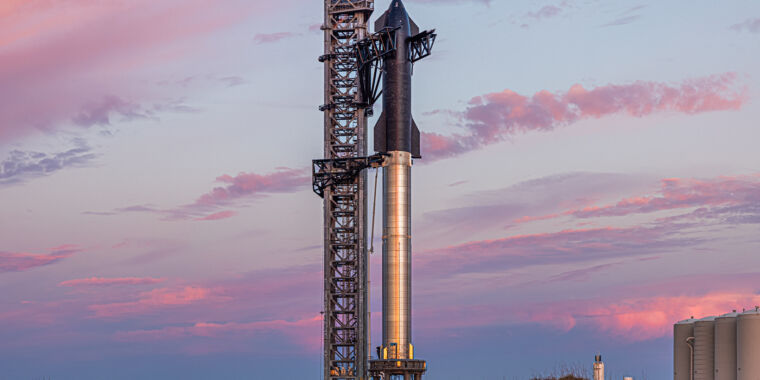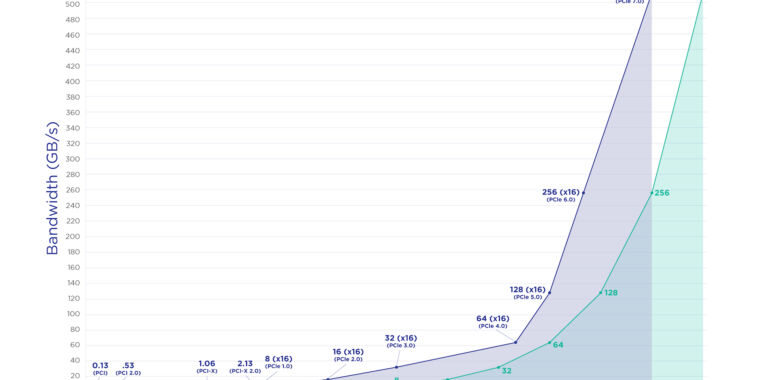
Trevor Mahlmann
Welcome to Edition 4.47 of the Rocket Report! It has been a big week for NASA, with the near completion of its wet-dress rehearsal test for the Space Launch System rocket. Assuming final preparations go well, this sets up a huge launch in a couple of months that we will be following with great interest.
As always, we welcome reader submissions, and if you don’t want to miss an issue, please subscribe using the box below (the form will not appear on AMP-enabled versions of the site). Each report will include information on small-, medium-, and heavy-lift rockets as well as a quick look ahead at the next three launches on the calendar.

South Korea successfully launches its own rocket. The three-stage Nuri rocket, built by the government’s Korea Aerospace Research Institute with hundreds of local companies, blasted off from the Naro Space Center in Goheung on Tuesday, The New York Times reports. Seventy minutes after the liftoff, South Korea announced that Nuri had succeeded in its mission of thrusting a 357 lb working satellite, as well as a 162 kg dummy satellite, into orbit 435 miles above the Earth.
A point of national pride … For decades, South Korea has nurtured an ambition to join the elite club of nations capable of launching communications and other satellites into orbit using domestic rockets. South Korea placed a satellite into orbit in 2013, but the two-stage rocket used for that mission—Naro—was built jointly with Russia. South Korea has spent nearly $1.5 billion to develop the 200-ton Nuri, also known as the Korea Space Launch Vehicle-II, with its own technology. (submitted by wesley96, tsunam, Ken the Bin, and EllPeaTea)
Another Astra launch fails. Two small NASA hurricane research satellites were destroyed after launch from Cape Canaveral on Sunday when the commercial rocket carrying them, provided by Astra, prematurely shut down its upper-stage engine before reaching the mission’s target orbit. The twin nanosatellites—each about the size of a shoebox—were the vanguard of a planned fleet of six cyclone monitoring spacecraft to measure temperature, moisture, and other parameters inside hurricanes and tropical storms, Spaceflight Now reports.
Four of the six satellites must work for TROPICS to be a success … The failure drops Astra’s record to two successful orbital flights in seven attempts. A previous launch in Alaska in March was the first Astra mission to successfully deploy functioning satellites into orbit, following a flight from Cape Canaveral in February that failed during the stage and fairing separation sequence a few minutes after liftoff. New Space Economy has a good rundown of how Astra ended up with the contract for NASA’s six TROPICS cubesats to be launched across three missions. Hint: They were the lowest bidder. (submitted by brianrhurley, Ken the Bin, and EllPeaTea)
LauncherOne may fly from the UK in September. In an interview with Sky News, Virgin Orbit Chief Executive Dan Hart said the LauncherOne rocket could fly from Spaceport Cornwall as early as September 8. The rocket will be dropped from the Cosmic Girl aircraft, which will take off from the runway in Cornwall at Newquay Airport. No orbital rocket has ever launched from the United Kingdom, so this will be a much-anticipated mission.
One launch ahead of it in the queue … As is often the case, the spaceport is being promoted as a driver of economic activity. The publication says the spaceport expects to employ 150 people directly, with a further 240 jobs in its supply chain. Several companies are also planning to open facilities around the airport to form a space cluster. The Cornwall launch is up next for Virgin Orbit after the STP-S28A mission, presently scheduled for June 30 from Mojave Air and Space Port in California.
Chinese rocket successfully returns to flight. A Kuaizhou-1A rocket sent the Tianxing-1 satellite into orbit late Tuesday, marking a return to flight six months after the solid launcher suffered a failure. The Kuaizhou-1A lifted off from a transport erector launcher from the Jiuquan Satellite Launch Center in the Gobi Desert, Space News reports. Operated by Expace, the Kuaizhou-1A consists of three solid stages and a liquid-propellant upper stage.
A government subsidiary … It is capable of carrying 200 kilograms of payload into a 700-kilometer Sun-synchronous orbit and has now flown 15 times. The previous Kuaizhou-1A flight ended with the rocket’s second failure in December 2021. The first launch took place in January 2017. Giant state-owned missile and defense contractor China Aerospace Science and Industry Corporation is the parent company of Expace. (submitted by EllPeaTea and Ken the Bin)
South Korean company to launch from Brazil. South Korean aerospace and defense company Innospace will be the first private business to send up a rocket from the Alcantara launch center in northern Brazil, said Brazilian Space Agency President Carlos Moura. He expects the launch to take place in December, Reuters reports. Innospace, which plans to make low-cost small satellite launches more accessible from multiple locations around the globe, plans to make an experimental launch from Alcantara.
Taking the place of Hyperion … The South Korean startup is developing a hybrid rocket powered by both solid and liquid fuel and will test the vehicle in a suborbital flight that will carry an inertial navigation system payload for the Brazilian Air Force. US rocket company Hyperion pulled out of negotiations with Brazil, and Innospace took its place to become the operator of the main launch area. (submitted by tsunam)

SpaceX steamroller rolls on. SpaceX hauled a Globalstar communications satellite into orbit early Sunday from Cape Canaveral, pulling off the third Falcon 9 rocket flight in 36 hours. This is the fastest sequence of three missions by any commercial launch company in history, Spaceflight Now reports. The trifecta of Falcon 9 missions began at 16:09 UTC Friday with the launch of 53 Starlink Internet satellites from the Kennedy Space Center. That mission set a record with the 13th flight of a reusable Falcon booster, which returned to land on one of SpaceX’s drone ships in the Atlantic.
That’s a lot of launches … SpaceX teams at Vandenberg Space Force Base in California launched another Falcon 9 rocket at 14:19 UTC Saturday with the German military’s SARah 1 radar reconnaissance satellite. The Falcon booster used on the SARah 1 descended back to Vandenberg for an onshore landing. The launches marked the 158th, 159th, and 160th flights of a Falcon 9 rocket overall, and the 24th, 25th, and 26th Falcon 9 missions this year, tying the 26-launch tally SpaceX achieved in the entire year of 2020. SpaceX is on pace to surpass the 31-launch mark—its total from last year—by the end of July. (submitted by EllPeaTea and Ken the Bin)
First Ariane launch of 2022. European launch contractor Arianespace launched its first Ariane rocket of the year on Wednesday. Two multi-ton geostationary communications satellites for Malaysian and Indian operators launched on an Ariane 5 rocket Wednesday from French Guiana, Spaceflight Now reports. The Malaysian-owned MEASAT 3d satellite and Indian GSAT 24 spacecraft were onboard the mission, heading for high-altitude positions to beam television programming and broadband signals across Asia.
Finishing strong … This was the 113th launch of the Ariane 5 rocket, which will be retired relatively soon and replaced with the next-generation Ariane 6 vehicle. There are just four Ariane 5 missions remaining before this retirement. The final flight will mark the end of an era, as the Ariane 5 made its debut in 1996. Overall the vehicle has recorded 108 successes out of 113 missions. Perhaps most notably, the rocket launched the James Webb Space Telescope to a precise orbit in December.
Dragon launch moved to July. A SpaceX cargo Dragon mission to the International Space Station will now launch no earlier than July 11, a delay of more than a month after engineers identified the source of elevated hydrazine readings in the spacecraft, Space News reports. The elevated readings were detected earlier this month when the spacecraft was fueled ahead of a launch then planned for June 10.
Finding the leak … After removing propellant from the vehicle, “SpaceX was able to narrow down the source of the issue to a Draco thruster valve inlet joint,” NASA said. “Teams will now remove the specific hardware to replace it ahead of flight.” The Draco thrusters are used for orbital maneuvering by Dragon, including approaching and departing the station, as well as for deorbiting at the end of the mission. The thrusters use MMH and nitrogen tetroxide propellants. (submitted by Ken the Bin)
Soyuz employees in Baikonur are idled. Russian news agency Interfax reports that employees at the Baikonur-based offices of the Progress Rocket Space Center would be placed in “idle” mode from June 14 to July 17. This appears to be a cost-cutting move, as employees in the Kazakhstan-based facilities will be paid two-thirds of their average wage during this period.
No work for the workers … The employees will be idled due to a lack of launch operations at the Baikonur Cosmodrome this summer, including previously planned OneWeb missions on the Soyuz rocket. Cooperation between Russia and Western customers broke down after that country’s unprovoked invasion of Ukraine in February. According to the report, the Progress space center, which designs and develops rockets, has reduced its workforce by 20 percent during the last three years. (submitted by EllPeaTea)

Vulcan will wait as long as it can for payloads. One of the most intriguing rocket questions this year, and next, is how quickly United Launch Alliance will get its Vulcan booster to the pad for its debut mission and a follow-up. This story has it all: ULA seeking to compete with SpaceX, reliance on a powerful but late rocket engine from Blue Origin, and urgent requests from the Space Force for the rocket to be ready. As a reminder, it’s believed that before the Space Force will start flying national security missions on Vulcan it wants to see two “certification” missions. Those two missions are presently planned to be a small lunar lander, built by Astrobotic, and the first orbital flight of Sierra Space’s Dream Chaser spacecraft.
Here’s where it gets really intriguing … As Ars previously reported, Vulcan probably will not launch in 2022 due to issues with both the BE-4 engine as well as the readiness of the Astrobotic payload. But the Vulcan rocket is not all that far from being ready, as the BE-4 engines should be delivered by July or August. At some point, the pressure could switch to Astrobotic, which is still finalizing its Peregrine lunar lander. Specifically, there are still key propulsion tests that must be completed for the lander. What happens if these don’t go well? In its need to demonstrate Vulcan’s readiness for the Space Force, would ULA launch without Astrobotic? On Wednesday, ULA Chief Executive Tory Bruno said on Twitter that the company would not—to a point. “I am prepared to wait for them as long as I can, if they turn out to need a little more time,” Bruno said of Astrobotic. There are also readiness questions about Dream Chaser, which has been more than a decade in development.
NASA more or less completes wet-dress test of SLS rocket. Over the course of more than 14 hours on Monday, NASA largely succeeded in completing this fueling test, loading hundreds of thousands of gallons of liquid oxygen and hydrogen into the first and second stages of the Space Launch System rocket. “It was a long day for the team, but I think it was a very successful day for the team,” said Charlie Blackwell-Thompson, Artemis launch director. NASA got to within T-29 seconds of liftoff during the test, near its intended target of T-9.3 seconds, before ending the test just prior to igniting the rocket’s four main engines, Ars reports.
No fifth attempt … NASA officials have scheduled a news conference for Friday to discuss their next steps for the rocket. However, Spaceflight Now reports that the agency has decided against a fifth test to count all the way down to T-9.3 seconds. Kathryn Hambleton, a NASA spokesperson, confirmed Thursday that the SLS team is declaring the wet-dress campaign complete and said managers are “working on plans to address some remaining (test) objectives before rolling back to the VAB.”
SpaceX gets environmental approval for Texas site. On June 13 the Federal Aviation Administration gave SpaceX one of several approvals that will be needed before the company can launch its Starship from the Boca Chica site in South Texas. The environmental approval comes in part because technology developments have allowed the company to eliminate some of the facilities initially planned for the location, greatly reducing its footprint and impacts, Ars reports.
A lot of work to do, but a win is a win … Still, the company will face restrictions within the site and timing of the launches; it will also be expected to support some environmental and historical interests. The company will also need the FAA’s approval regarding safety and risks before it can begin operations. Overall, none of these conditions seems like a major problem, so the approval appears to be a major win for the company. Any issues regarding how well the company lives up to its agreement, and any lawsuits that ensue, will happen within the context of this approval and be less threatening to the company’s operations in Texas.
Ariane 6 will not launch in 2022. Europe’s much-anticipated next-generation rocket, which has a roughly comparable lift capacity to SpaceX’s Falcon 9 booster, was originally due to launch before the end of 2020. The Ariane 6 rocket has subsequently been delayed a few times, but before this month the European Space Agency had been holding to a debut launch date before the end of this year. Last week, however, during a background call with reporters, a senior European Space Agency official confirmed the rocket would not launch in 2022, Ars reports.
Spring of 2023, maybe … The source said an issue with the “cryogenic connection system” had been a critical item requiring a lot of focus for development efforts and a driver of delays. The official declined to provide a new specific launch target for Ariane 6’s debut flight. (A separate source has told Ars the working date is no earlier than April 2023.) The new launch target is expected to be revealed on July 13 during a joint news conference with European space officials. (submitted by Ken the Bin)
SLS mobile launcher is years late, over budget. When Bechtel won the contract to build a mobile launcher, named ML-2, for the upgraded version of the Space Launch System rocket, it was supposed to cost $383 million. But according to a scathing new assessment by NASA’s inspector general, the project is already running years behind schedule, the launcher weighs too much, and the whole thing is hundreds of millions of dollars over budget. The new cost estimate for the project is $960 million, Ars reports.
Bechtel takes most of the blame … “We found Bechtel’s poor performance is the main reason for the significant projected cost increases,” the report, signed by Inspector General Paul Martin, states. The report finds that Bechtel underestimated the project’s scope and complexity. In turn, Bechtel officials sought to blame some of the project’s cost increases on the COVID-19 pandemic. In addition to cost overruns, the late tower threatens to delay the initial launch of the more powerful Block 1B of the SLS rocket.
Next three launches
June 27: Electron | CAPSTONE | Mahia Peninsula, New Zealand | 09:50 UTC
June 28: Falcon 9 | SES-22 | Cape Canaveral, Florida | 21:04 UTC
June 30: PSLV | DS-EO | Satish Dhawan Space Center, India| 12:30 UTC









